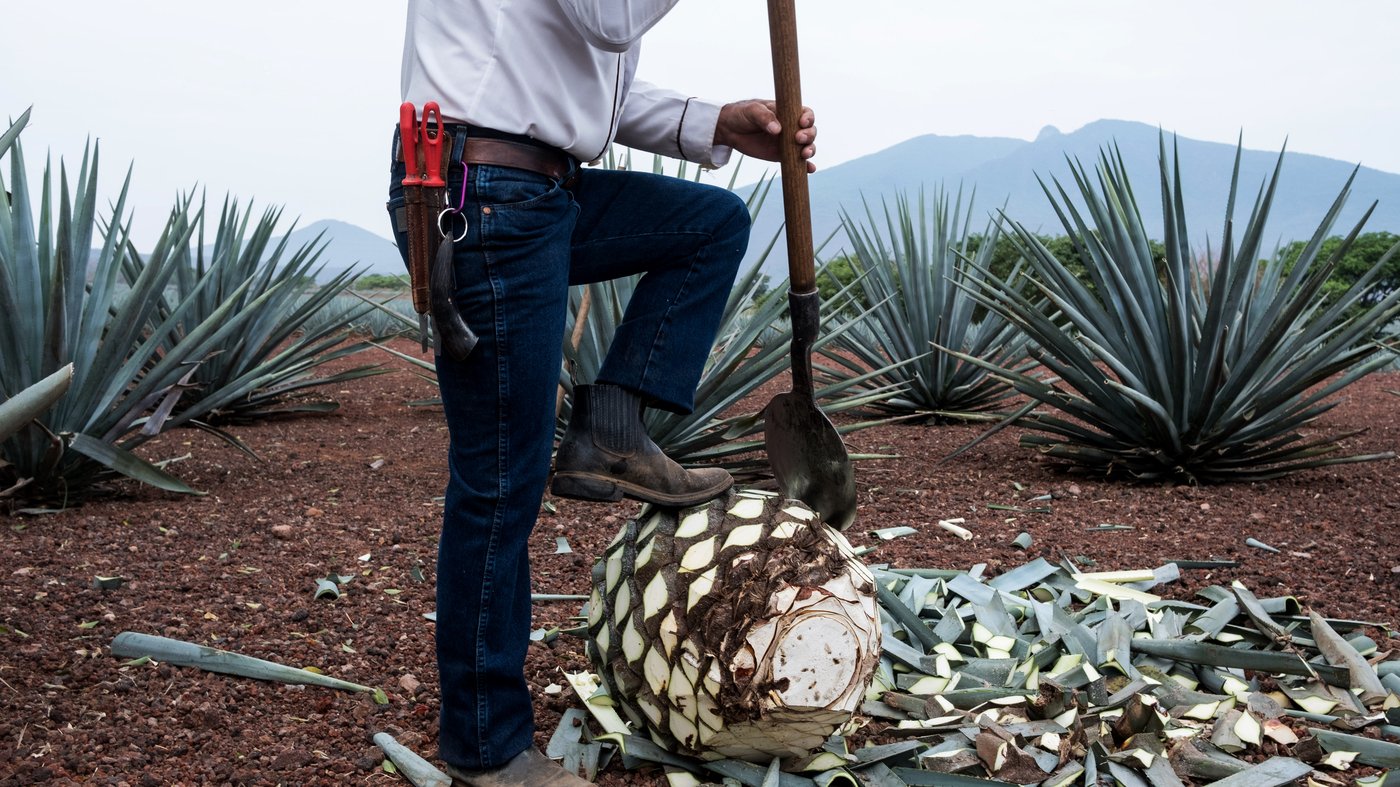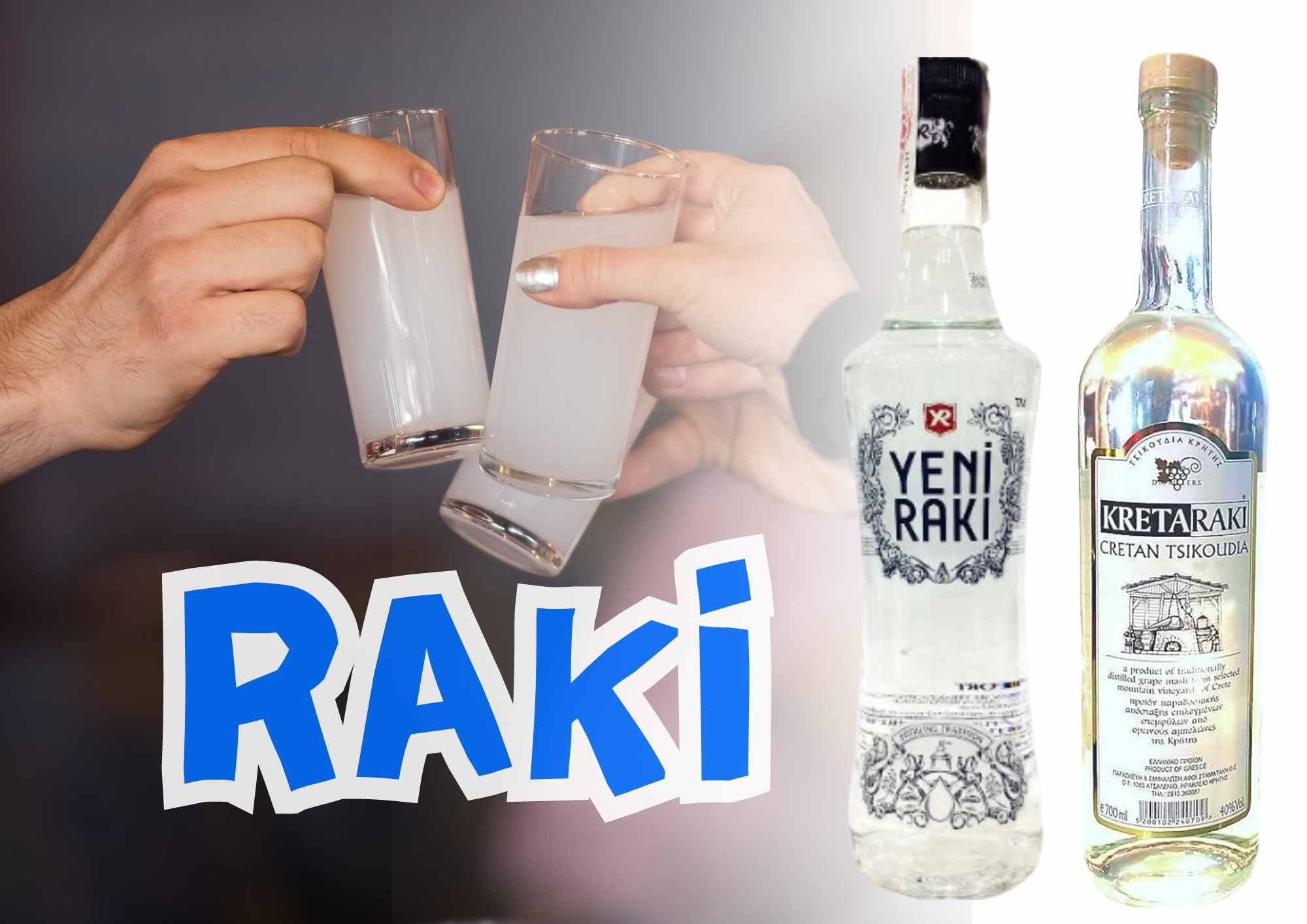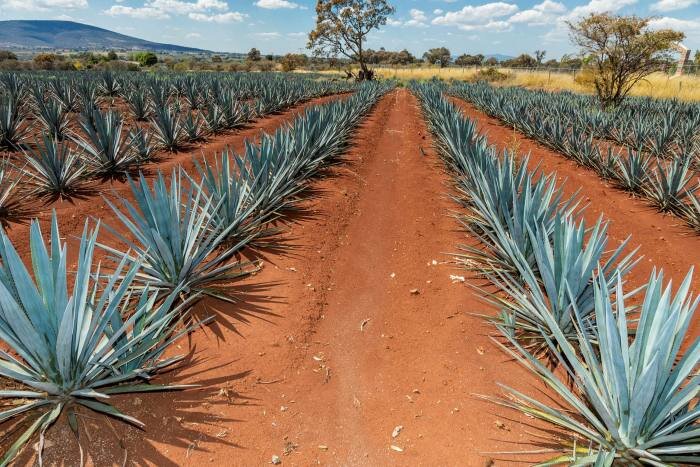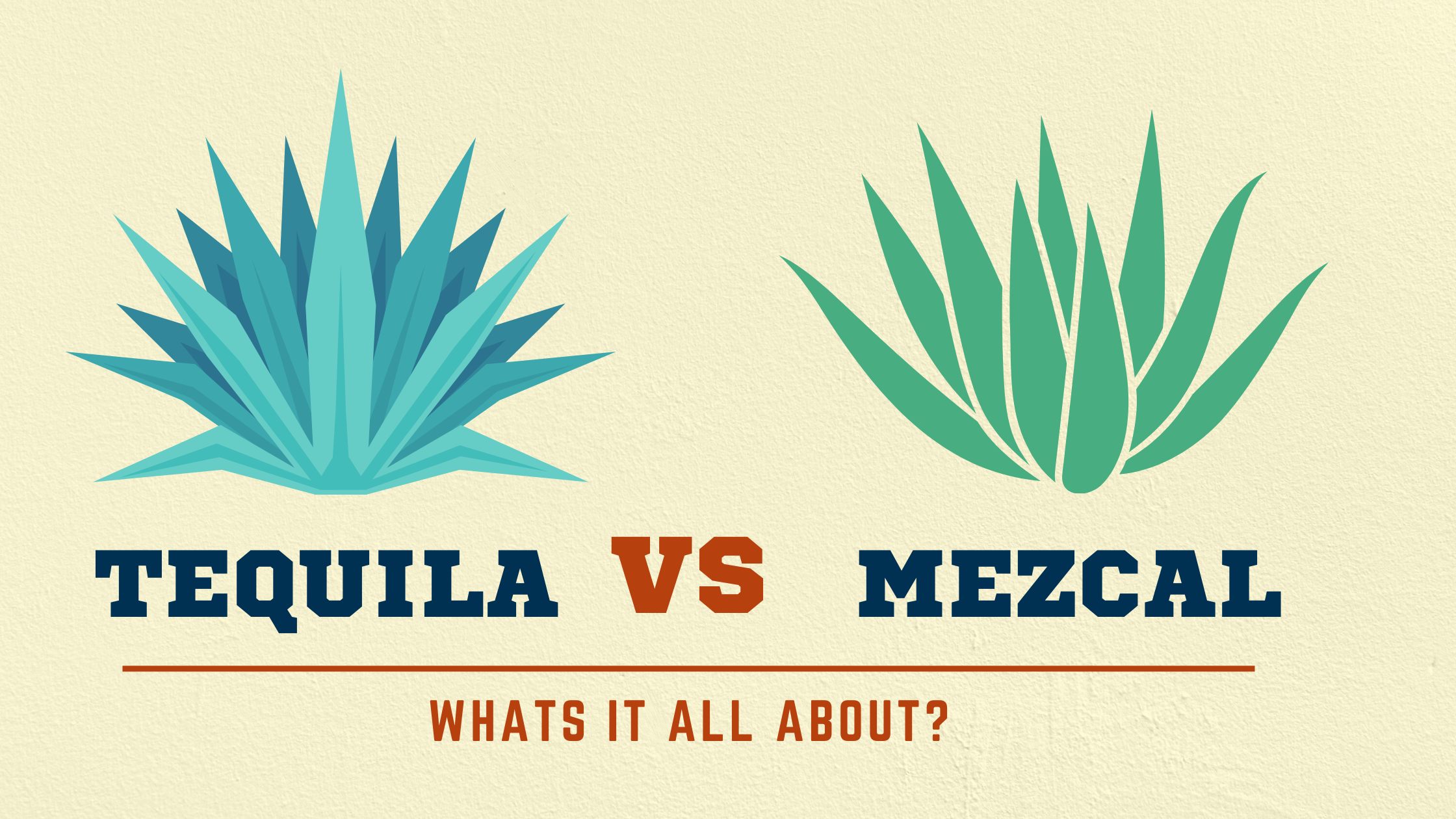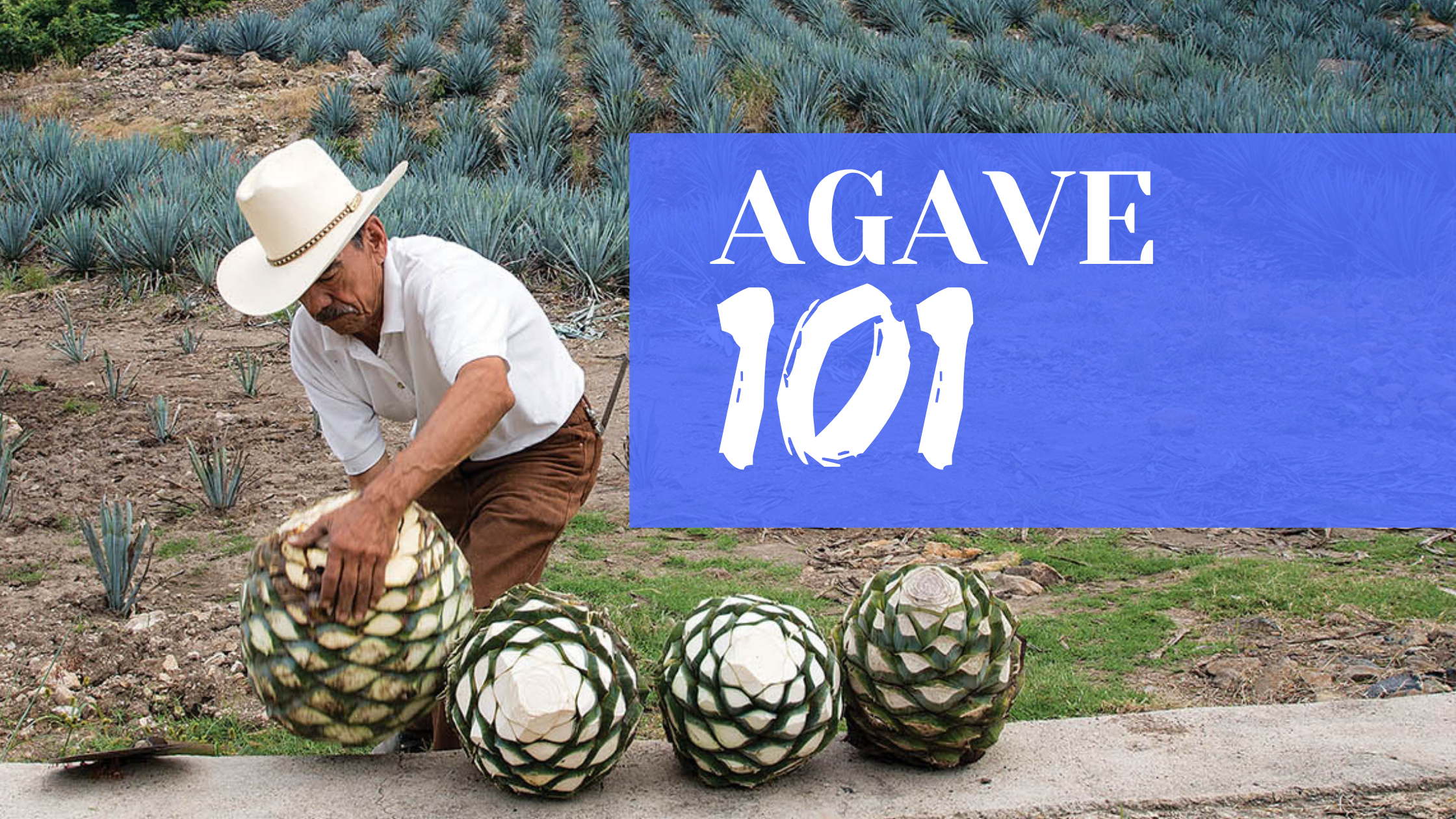What Is Mezcal? - The “Smoky Tequila”
Mezcal - Mexico’s favourite spirit and smoky cousin of Tequila. But what is Mezcal?
Pictured: Mezcal being poured. Image source
Mezcal is a spirit we’re seeing more and more of in todays western world. But a lot about Mezcal still seems to be somewhat of a mystery. Questions like, is Mezcal Tequila? where does Mezcal come from, what makes Mezcal Mezcal, What is Mezcal and Is Mezcal smoky Tequila? are constantly being asked.
Well today we’re going to put an end to that with this complete guide on everything you need to know about Mezcal. From what it is to how it’s made and all the resources you could ever imagine to explore this wonderful and somewhat mysterious Mexican spirit.
What is Mezcal
Mezcal is a Mexican distilled agave spirit similar to Tequila but far from it.
You may be more familiar with its counterpart Tequila. Which is where the confusion usually comes in around the subject. Is Mezcal and Tequila the same thing? No, no its not.
Although on the surface they seem very similar, they are quite different. For one Mezcal can be made with a variety of 25 different agave species, while Tequila has to be made with a certain species of agave. Which technically means - All Tequila is Mezcal but not all Mezcal is Tequila. Just like how all Jacuzzis are hot tubs but not all hot tubs are Jacuzzis…
An even simpler way to think of it is that Mezcal is like whisky. Whisky is an umbrella term that covers a whole range of styles, Bourbon is not the same as Scotch but it still falls under the term whisky. In that likening, whisky is mezcal and bourbon is Tequila.
Make sense? If not check out my full side by side comparison on the differences between Tequila and Mezcal. That should help you easily understand.
Is Mezcal Smoky Tequila?
No. Mezcal is not smoky Tequila. Mezcal is a different spirit made with the same plant. However, Mezcal does taste like smoky Tequila. So a great way to describe it to someone who has never had mezcal, is like a smoky tequila.
How is Mezcal Made
So now we have an idea of what Mezcal is, let’s break down how Mezcal is made in 5 steps.
Harvesting
Pictured: Jimador harvesting agave. image source.
Step one of Mezcal production is to harvest the agave. Agave is the base of all Mezcal as well as Tequila. Agave’s are almost like huge circular pineapples. The process of harvesting is that a harvester, known as a jimador, will cut away the leaves to leave behind just the heart of the agave.
Agave in itself is a whole subject, harvesting may be as quick as cutting up the plant and removing the leaves but the growing itself is a slow process and the maturity of the agave has a large impact on the final product.
It’s a very interesting subject, at least to me, just check out my full guide to agave here. By better understanding this remarkable plant you can fully understand, and more importantly, appreciate not just Mezcal but any agave based spirit. If you love agave spirits or plants in generally, I highly recommend checking that out.
pictured: agave with leaves trimmed of and planted agave behind.
One interesting thing is that agave produces one of the healthiest natural sugars in the world. I wrote an article previously which you can find here: 8 Surprising health benefits of Tequila, is Tequila good for you? In which I discuss all the health benefits to Tequila, majority of which come from agave which yes, translates to Mezcal.
There are around 250 species of agave. Tequila can only use one to be called Tequila, Mezcal on the other hand can use up to 25 different varieties, but 5 of them are used more frequently then any other and they are; angustifolia (espadin), asperrima (maguey de cerro), weberi (maguey de mezcal), petatorum (tobala), and salmiana (maguey verde o mezcalero)
Most Mezcal is made with Espadin agave.
pictured: espadin agave, mezcals most popular variety of agave. image source.
Cooking
pictured: agave cooking pit. image source.
After the agave has been harvested, its time to cook the pina. The pina being the heart of the agave. This is also where Mezcal gets its name from.
The word mezcal is derived from the Nahuatl word for cooked agave.
This is also the part which gives Mezcal its smoky flavour. You may have heard people referring to mezcal as a “smoky Tequila” or likened to the peatiness of Scotch, the reason it has that smoky flavour profile which differentiates it from tequila is all due to this process.
The reason Mezcal tastes smoky is because The piñas are roasted in an underground pit that’s covered with hot rocks for several days. The long roasting time gives mezcal its smoky flavour.
pictured: cooked agave in a roasting pit. image source.
This in itself is an artform, some distillers use old fibres from previous distillation to cover the rocks as to not have any direct contact from the agave with the rocks. These pits are also covered with soil and/or banana leaves so the agave is fully buried in a makeshift underground oven.
Milling
pictured: horse pulling a tahona over cooked agave. image source.
The roasted pinas are then milled once again using a traditional method - the tahona
The tahona is a large horse-drawn stone mill which crushes the agave releasing the juices inside, which now thanks to the cooking step, have been fully transformed from starches to sugars, which are fermentable.
Fermentation
pictured: Mezcal fermenting. image source.
All that juice and crushed pina fibres are then left in wooden vats to naturally ferment, no need for the addition of yeast, the natural yeast from the air will do the work for them. This process will take around 30 days.
Distillation
pictured: tradition still used in mezcal production. image source.
The fermented juice is then double distilled. Once to create mezcal and once to soften and perfect the flavours.
The interesting way mezcal producer test the ABV
Throughout spirit production of any kind, regulations are in place to ensure correct methods are taken for health, safety and of course, checking the information you provide is correct. All this usually takes high tech equipment, which I’m sure you’ve learnt by now is not in the interest of mezcal producers.
Mezcal is still today very traditional. There is nothing techy about it, I mean come on, they crush the agave using a horse. It doesn’t get less techy then that!
My point is, ABV (alcohol by volume) has to be taken to determine how strong a spirit is. Usually, a very techy part of spirit production. But mezcal is not techy, so how do they do it? Very interestingly is the answer…
In Mezcal production, ABV is determined by pouring a stream of the mezcal into a small vessel to induce surface bubbles. These bubbles, known as pearls by the Mezcal producers, will remain stable for tenths of seconds only if the alcohol content is close to 50%
Basically, they pour the liquid and can tell by how many bubbles appear, how fast they burst and how large they are what the exact abv is. Testing has been done and they are very accurate with this method.
The testing of abv in mezcal is an artform in itself, mezcal aside.
pictured: mezcal abv determining. image source.
What are the styles of Mezcal
After those 5 steps of production, what you do with the Mezcal next will determines the style of Mezcal you have produced, which fall into 3 styles;
Blanco (white or clear) Mezcal
Blanco Mezcal is the result of not aging, straight from the still to the bottle distilling. It’s a clearer, purer Mezcal, the most true to the agaves flavour - some what vegetal.
My favourite Blanco Mezcal is Momento Verde.
Joven (young) Mezcal
Joven describes Mezcal that may be slightly aged or ‘rested’ to give a bit of colour and softer flavours - less harsh then Blanco Mezcal but still with a vegetal undertone.
My favourite Joven Mezcal is Ilegal Mezcal Joven.
Anejo (aged) Mezcal
Anejo Mezcal is Mezcal that has been aged in barrels to give a much darker, richer flavour more similar to Scotch.
pictured: Mezcal aging in barrels for joven or anejo styles. image source.
The Mezcal Worm
Ever heard about a worm inside your bottle of Tequila? Ever seen it? There’s a lot of myths and speculation about what this worm actually is and why its there. That worm, that’s apart of mezcal production NOT tequila.
There is no such thing as a tequila worm. Its a thing in Mezcal, and in fact, its not even a worm at all, its the larvae of a type of moth found on agaves used in Mezcal production.
It’s a subject I’ve covered completely in my article here. In that article, titled; What is a Tequila Worm? Should you eat it? And why is it there? I cover exactly what it is, why its there and any/every question you may have on the ‘Tequila worm’ so do check that out if you’re at all curious or have heard of it before.
pictured: the mysterious mezcal worm. image source: what is a tequila worm?
Mezcal vs Tequila
I’d love to talk about and appreciate mezcal without having to mention Tequila but alas, that’s just the way it is. If you’ve read my Tequila 101 guide: Everything you need to know about Tequila’ which is structured the same as this guide just about tequila, you will now be fully understanding of both spirits.
Meaning you will fully understand the difference between tequila and mezcal.
However, you still may have some questions regarding how Mezcal is different from Tequila, whether Tequila and Mezcal are the same thing or maybe you’re just looking for an easier to compare post to see exactly where they differ.
If that is the case, check out my comparison post ‘Tequila vs Mezcal, a comprehensive comparison’ where you will see side by side the differences of Mezcal and Tequila
How to drink Mezcal
Now for the fun part, we know exactly what Mezcal is so its time to enjoy it. Which you can do through drinking straight, simple mixers or cocktails, but first things first, you need a good bottle of Mezcal.
Which can be difficult, especially in the UK where good mezcal is either non existent or vastly overpriced. But don’t worry, you can still buy good mezcal at a reasonable price here in the UK.
Below are all the Mezcals and the only mezcals I recommend, the ones tried and tested by yours truly and where you can buy them at a good price (UK only, sorry my American counterparts)
The 5 Top Mezcal bottles to buy and try in the UK
MVM Verde Momento Mezcal
£39.95 - amazon.co.uk
Verde Momento is a Mezcal made with 8-year-old organic espadin agave from the Oaxaca state in Mexico.
Taste wise it’s got all the smoke you want from Mezcal with added grassy notes thanks to the espadin agave.
As far as price goes it’s one of the cheapest Mezcals you can get but tastes amazing. I especially recommend the use of this Mezcal in cocktails.
They are also environmentally friendly, they plant 10 new agave plants for every 1 they harvest and invest 10% of there profits into ecological and social sustainability programmes
Finally, one thing about this that I really love is the bottle itself. They use different works of art for the front labels. There’s no fixed label so each time you purchase one even though the liquid will be the same, the label will likely be a different art piece.
In my time I’ve seen at least 20 different labels so you really don’t know what you’re going to get, from agaves to cats to big lips and funky depictions. It’s honestly such a cool idea. Makes opening the amazon box that much more enjoyable not knowing what you’re going to get. My aim is to have a full shelf of empties with every art piece.
Learn more about this Mezcal here.
Ilegal Reposado Mezcal
£56.64 - amazon.co.uk
This is probably my absolute favourite expression of a rested Mezcal (also known as joven or reposado).
it taste exactly how you would want a rested mezcal to taste with those big smoky flavours but subtle characteristics of earthy oak.
They do also produce a Blanco Mezcal which is £45.99 here and tastes delightful, a bar essential. As well as a aged Anejo Mezcal which is the most expensive expression at £87.95 here. But the reposado I just love so much.
It also has an interesting story behind it. Ilegal Mezcal was founded by John Rexer in 2004. John hadn’t been able to find any good Mezcal suppliers in Guatemala when he opened his bar, the iconic Café No Se, so he went to Oaxaca and started smuggling it across the border in a variety of creative ways just to stock his bar, before turning it into the brand Ilegal Mezcal.
Learn more about this Mezcal here
Pensador Especial
£49.50 - amazon.co.uk
A unique Mezcal made with 100% Tepextate agave which has flavours more leaning towards spice - pepper and coriander.
They have a cheaper expression for £32.95 found here and made with Espadín agave but this especial addition is something else entirely.
Especial is a limited series showcasing spirits produced from rare and wild agaves. Sourced from a variety of producers, employing a variety of techniques, each batch will display a different facet of Miahuatlán. They are unique, un-repeatable, and very exciting.
PA1 comes from Felipe and Ageo Cortes - a father son team who distil in a refrescador still.
Even if you don’t plan on drinking it, this is a good one to get if you have a alcohol collection or are planning on starting one.
Learn more about this Mezcal here
Bozal Cuixe Mezcal
£60.00 - amazon.co.uk
Made with one of the most physically distinct species of agave, the Cuixe, it grows vertically as a single stalk with its leaves spreading at the top. Due to its unusual structure, and the stalk containing the firmer piña material, the Cuixe can be difficult to harvest and to work with in general. This agave offers aromas full of tropical fruit with a dry piney and mineral finish.
Mezcal is different in the way of the agaves used, which is why I recommend focusing on trying different styles of agave you might not of heard of or tried, rather than just different styles of aging.
Bozal also have 3 other styles which you can all find here.
Learn more about this Mezcal here
Del Maguey Vida Mezcal
£44.95 - amazon.co.uk
Del Maguey Vida was one of the trail blazers for the UK Mezcal scene. For the longest time this was one of the only accessible Mezcals. One of the only ones we seen in bars and used in cocktails.
Because of that reason alone it’s a must try.
But more so, it has a distinct fruitiness to it beneath all that smokiness. Especially in cocktails when it develops flavours of honey, vanilla and banana. A truly delicious Mezcal which you will constantly be picking new flavours up from.
Learn more about this Mezcal here
How to drink Mezcal
Now you have a good bottle of mezcal, you can get to enjoying it. Try sipping it neat at room temperature, add a bit of water to dilute it.
Cocktail wise, try swapping Tequila recipes for Mezcal for an interesting flavour change, Maragritas work great, also check out the Smartblend Margarita which uses both Mezcal and Tequila.
The Picante De La Casas is a spicy tequila cocktail which works amazing with light Mezcal.
Mixer wise, soda water works great with darker Mezcal to bring out the characteristics of the Mezcal and tonic water works great as an interesting sipper if you have a lighter mezcal.
More Spirit Guides
Smartblend is a participant in the Amazon Services LLC Associates Program, an affiliate advertising program designed to provide a means for sites to earn advertising fees by advertising and linking to amazon.co.uk and amazon.com. Smartblend does earn a small commission on goods purchased through the included links. Don't worry, it doesn't cost you any more, but we do appreciate your referral!
Related articles
Hi, I’m Cameron, guv’nor of Smartblend and author of this article. If you liked this then you’re in luck, I have a bunch of agave spirit content here. just check out the above or click here for more. Oh, and don’t forget to sign up below to receive the Smartblend monthly newsletter!



